
Choosing the Perfect Staircase Design for Your Dream Home

Create Your Dream Home With Our Painting Experts
Fill the form below to book a free site evaluation by Nerolac Nxtgen painting Services expert
Make your stairs spiral into creativity and inspiration.
A perfect staircase design is meant to sit well in your living room while also being a statement in itself. From serving its purpose to acting as an architectural masterpiece, a well chosen staircase design can amplify your home’s aesthetics. From choosing the perfect handrails, to taking care of ergonomics and ensuring space utility, choosing the perfect staircase design covers many factors. In this blog, we take you through various types of perfect staircase designs, materials and factors to choose
Types of Stair Cases Designs
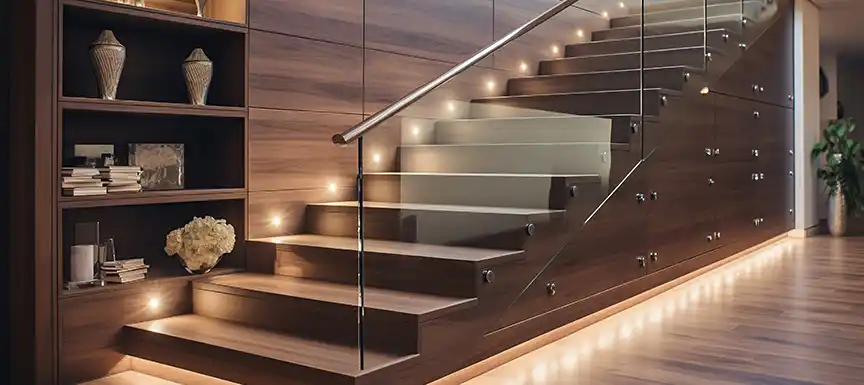
Types of staircase designs don’t just include the materials or architectural shape, but also the unique accents or differentiating factors like the handrails. Let us glance through the various popular types of stairs based on the shape and geometric design:
Straight Stairs Design For Home
Eliminating any spiral designs or circular turns, straight stairs are a singular flight of stairs that can be designed in multiple ways. The pros of straight staircase designs is that it is effective for space utilisation and leaves room for accents and hedge walls. Since it is a practical and functional choice for architects, you can add a bit of aesthetics with planters, Victorian handrails or levitating steps.
L-shaped Staircase Design
L-shaped stairs change its landing at 90 degrees and have an angular turn. These stairs are also known as quarter-turn stairs. If space is limited, L-shaped stairs are an effective choice. In order to suit various design styles, L-shaped stairs can be customised to fit sizings, tweak handrails as per choice of design and sport different materials.
U-shaped Stairs Design For Home
Based on its name, U-shaped staircase designs showcase parallel stairs with a U connecting it. The turn takes place at 180 degrees, allowing unique designs, materials and accents to be flaunted with it. U-shaped stairs bring in an old world charm, so using materials such as iron and wood can transform your staircase. Golden handrail finishes will look good with a Victorian feel. U-shaped stairs can also hold additional storage underneath it to amplify its functionality.
Spiral Stairs Design For Home
With a column or a pillar at its centre, spiral stairs are often wrapped around the base. Spiral stairs are a traditional architectural design spotted in large mansions, palaces and houses. When the base or floor area is lesser, spiral stairs bring its space-saving design and aesthetics to play. The aesthetic value for spiral stairs is very high as it can have inspiring handrail designs in marble and glass while flaunting its unique shape.
Also Read: Simple Wall Paint Designs for Your Home Walls
Materials for Staircase Design
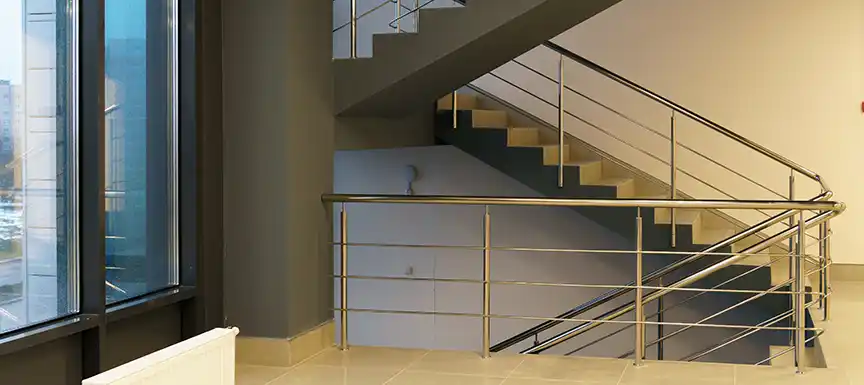
It is imperative to choose the right material for staircase designs because of the finish, its aesthetics, its durability and its compatibility with the rest of your room. While keeping maintenance, visuals and functionality in mind, let us look at the common materials used for stairs designs for home.
Wood Staircase Design:
Seen in spiral or straight stairs, wood is the most popular choice for staircase designs and staircase colours as well because of its warm, natural finish and welcoming characteristics. Wood is also widely chosen because it can be cleaned easily, maintained well and can be painted over for any choice of staircase colour.
Metal Staircase Design:
With the industrial theme being a common choice in contemporary households, metal has become a common material in this type of interior design style. This sturdy material offers durability and is easily cleanable. Metal stairs do not wear and tear easily, but require regular maintenance because of rust. Straight stairs often use perforated metal sheets for an aesthetic and sturdy look.
Glass Staircase Design:
For airy and spacious spaces, glass staircases are a perfect and delicate material to go with. Glass staircases look regal and opulent and can match well with minimal, white sleek rooms. Glass can be used with other materials and metals or can be stained and used for a visual feel.Glass is also widely used with marble for an opulent vibe. Glass is easily cleanable but is difficult to maintain because of its fragility.
Concrete and Stone Staircase Design:
For a rugged and raw look, concrete stairs take on an industrial aura. Strong, durable and versatile, concrete staircase designs are easy to maintain and can take on various textures, paints and carvings. Stone stairs come in various materials like limestone, granite and marble. Stone is a luxurious option over concrete and is often seen in sophisticated hotels and homes.
Also Read: Discover Modern Texture Paint Designs for Your Rooms
Traditional vs. Modern Stairs Railing Design
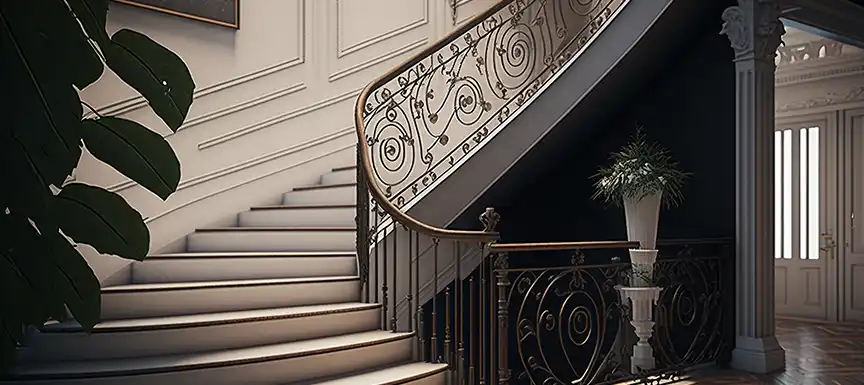
In order to cater to various interior design and architectural styles, there are an array of stairs railing designs ranging from traditional choices to modern. Let us draw comparisons between these two groups to help you shortlist staircase designs.
Type of Stair Cases Designs:
Traditional railing styles are often Victorian in nature and sport floral carvings, intricate designs and decorative patterns. Whereas in modern railing styles, the focus is on minimalism with sleek and straight lines, minimal patterns and geometric or abstract carvings or illustrations.
Types of Stair Cases Designs materials:
Traditional materials are warm and inviting like wood, wrought iron and brass. Whereas modern materials include types of stone, concrete, glass or metal for a sleek and clean design style.
Style resonance Staircase Design:
Modern railings represent a new and modern airy space where openness is at the centre. Traditional railings using wood add a sense of old world charm, opulence and warmth to the space.
Versatility Stairs Railing Design:
From mid-western, industrial styles to contemporary designs, modern railings can complement the newer types of interiors. Colonial, Victorian styles and Mediterranean traditional styles can take on traditional, ornate railings.
Also Read: Trending Home Wall Painting Design Ideas with Images
Factors to consider when choosing a staircase design for your home
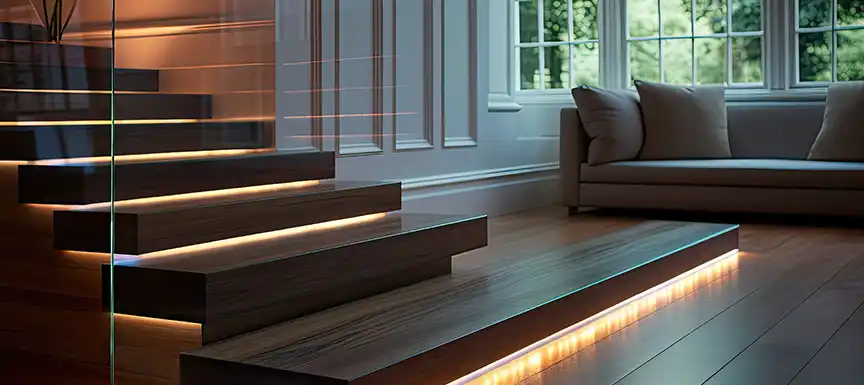
1. Architectural Staircase Style:
Determine the architectural style of your home and choose a staircase design that complements it. Whether its traditional, colonial or mid western modern, your staircase design must harmonize with its surroundings.
2. Type of Staircase space:
Your staircase design must carefully evaluate the layout of the house, the floor space, the ceiling height, the floor plan and ventilation before finalization.
3. Staircase Floor space and traffic:
Make sure your staircase design is harmonious with the floor and walking area. It should be effective enough to act as a staircase and not block airway or walkway.
4. Staircase Safety standards: -H3
Your staircase design must adhere to all safety codes and standards of the building as per your area regulations.
5. Aesthetic choice:
Choose the aesthetics of the staircase design as per your style and personality, Let it reflect what you like.
6. Staircase Materials:
Choose materials that are visually appealing and functional like wood, stone or concrete.
7. Staircase Maintenance:
Make sure you clean and maintain your staircase as that also defines it durability and longevity.
We hope that you found the dream staircase design for your dream home. Keep in mind the various factors, materials and maintenance tips while choosing and constructing your design.
Nerolac Paints, a leading paint company in India offers a wide range of wall paint colours & painting services & solutions for homes & offices.

Colour Combination for Walls: 10 Beautiful House Colour Combination Ideas
A Guide To Trending Colour Combinations For Walls With Images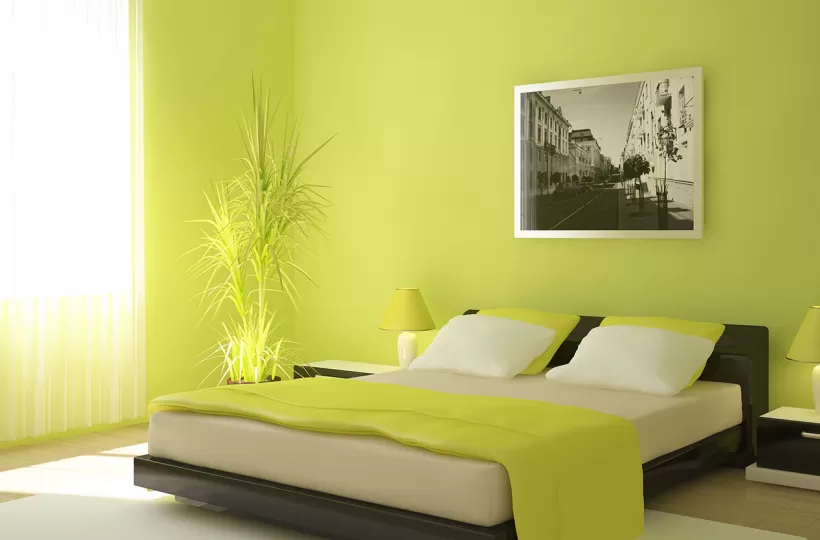
12 Stylish Green Colour Combinations and Photos
Green Colour Combinations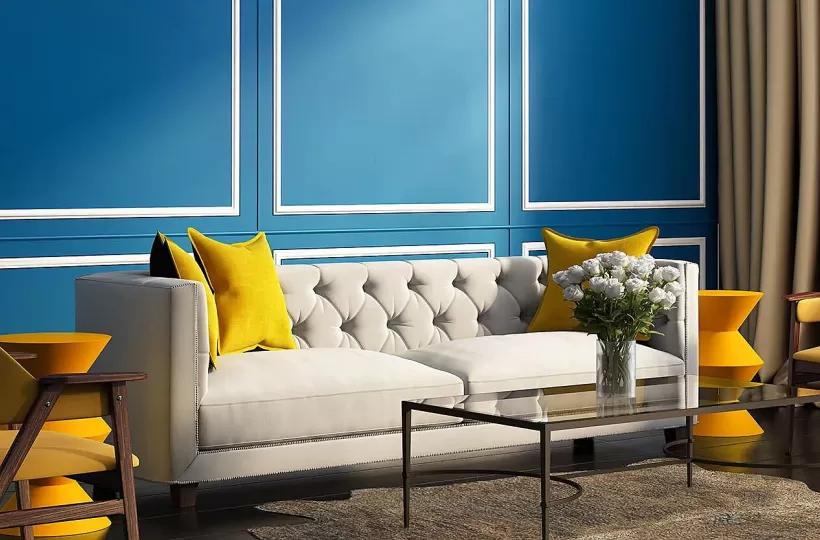
What Colours Match with Blue? 14 Colour Combinations with Blue for Your Home
Blue is a universally popular colour for décor and design
-
Recent Blogs
- Zodiac Sign Meanings: Choose Lucky Colours With Your Astrology Sign
- Top 10 Painting Ideas for North & South Facing House Vastu
- Top 10 Creative Wall Furnishing Ideas For Your Lovely Home
- Top 10 Mocha Mousse Colour Combinations and Photo Inspirations
- How Heat Resistant Paint for Roofs Can Reduce Your Indoor Temperature?
Get in Touch
Looking for something else? Drop your query and we will contact you.
Get in Touch
Looking for something else? Drop your query and we will contact you.
Popular Searches
Get in Touch
Looking for something else? Drop your query and we will contact you.


